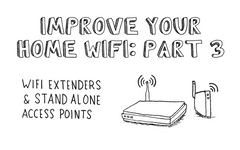Payment methods accepted

The Role of Fiber Optic Cables in Computer Networking
Written by Ben Hamlitsch, trueCABLE Technical and Product Innovation Manager RCDD, FOI
Compared to copper wired cables, fiber optic cables provide higher bandwidth and can transmit data over longer distances. Fiber optic cables support much of the world's internet, cable television, and telephone systems. They carry communication signals using pulses of light generated by small lasers or light-emitting diodes (LEDs).

How Fiber Optic Cables Work
A fiber optic cable consists of one or more strands of glass, consisting of the cladding and core, only slightly thicker than a human hair. The center of each strand is the core, which provides the pathway for light to travel. The core is surrounded by a layer of glass, the cladding, which reflects light inward to avoid loss of signal and allow the light to pass through bends in the cable.
The two primary types of optical fiber cables are single-mode and multimode. Single-mode fiber uses extremely thin glass strands, 8-10 micron core size, and a laser to generate light. While multimode optical fiber cable has a 62.5- or 50-micron core size and use LEDs, and now more common a VCSEL or (vertical-cavity surface-emitting laser) to transmit light down the fiber optic cable.

Advantages of Fiber Optic Cables
Fiber cables offer several advantages over long-distance copper cabling.
- Fiber optics support a higher capacity. The amount of network bandwidth a fiber cable can carry easily exceeds that of a copper cable with similar thickness. Fiber cables rated at 10 Gbps, 40 Gbps, 100 Gbps and even 400 Gbps are standard.
- Because light can travel for much longer distances over a fiber cable without losing its strength, the need for signal boosters is lessened.
- A fiber optic cable is less susceptible to interference. A copper network cable requires shielding to protect it from electromagnetic interference. While this shielding helps, it is not sufficient to prevent interference when many cables are strung together in proximity to one another. The physical properties of fiber optic cables avoid these problems.
In today’s modern world fiber optics are used in almost all aspects of the network system. Much of the physical wiring in the network is done with fiber optic cables. In fact, most of the world’s communications run on fiber optic cable. If you were to google “fiber optic marine sea cable” you would find a map showing all the lines of deep-sea fiber cable installed providing the telecommunications backbone for all the world’s vast and extensive networks.
Fiber networks use what are called transceivers to send signals of light over glass for very long distances. These transceivers can be found in almost any commercial and some residential routers and switches. One of the benefits of these transceivers is they are most often hot swappable, which means the transceiver can be removed or inserted into the fiber port on the router or switch allowing for upgrades and easily swapping a single transceiver instead of the whole router or switch if something goes wrong or breaks down.
Fiber optics are the backbone of modern telecommunications. There are millions of miles of fiber optics installed around the world providing high speed internet, CATV, telephone services, and high-resolution video streaming. In fact, the entire backbone cabling for the up-and-coming 5G services being deployed around the world are all cabled using fiber optics. Fiber is truly the future in telecommunications.
Stay Connected!
trueCABLE presents the information on our website, including the “Cable Academy” blog and live chat support, as a service to our customers and other visitors to our website subject to our website terms and conditions. While the information on this website is about data networking and electrical issues, it is not professional advice and any reliance on such material is at your own risk.

































